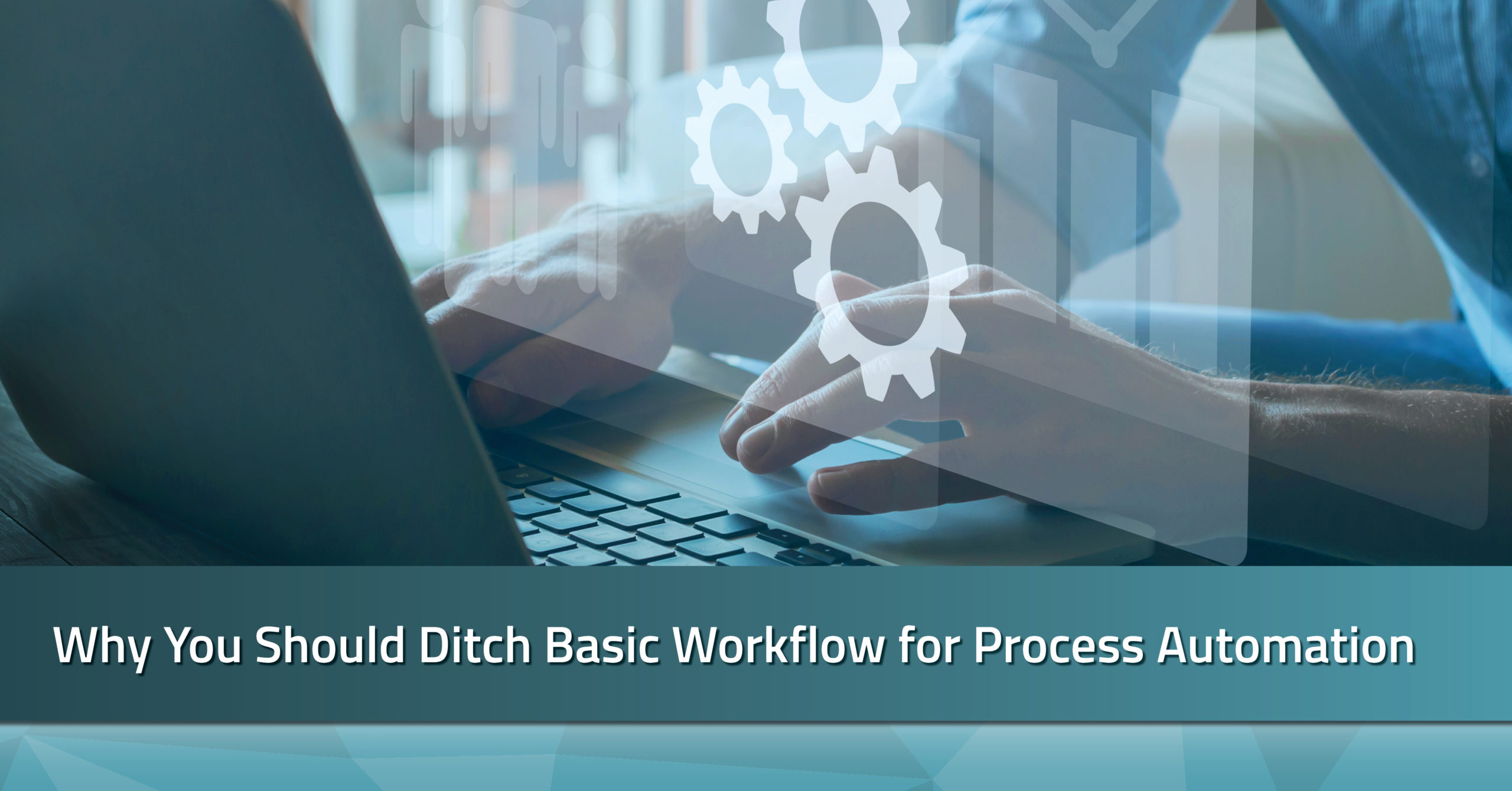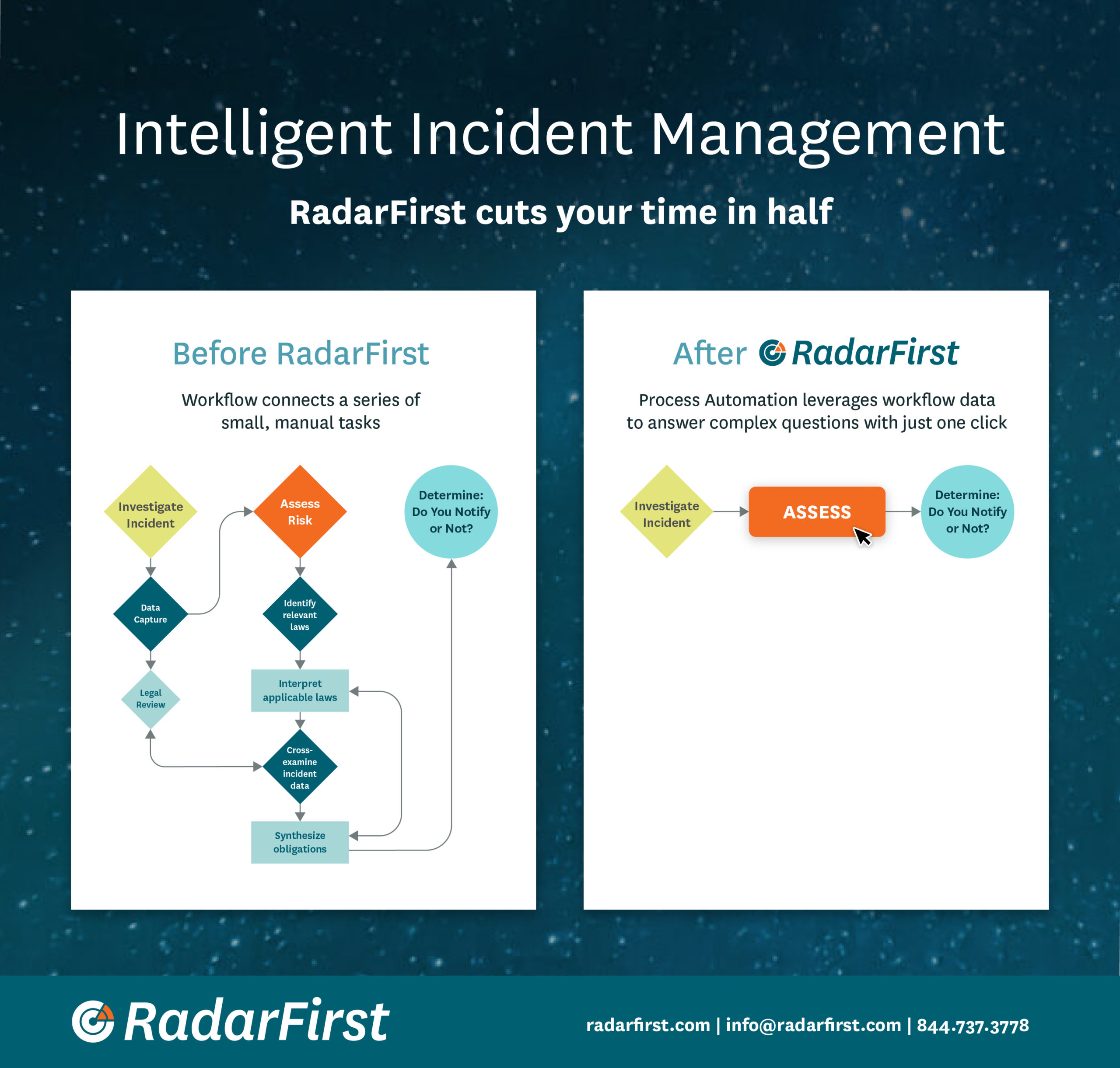- It’s a not a matter of “if” but “when” a data breach will occur
- What’s the difference between workflow automation and process automation, and how do you spot it?
- Why automation with Radar is like having your very own “Easy” button
Read more below.

Why You Should Ditch Basic Workflow for Process Automation
When it matters most, you need more than just a workflow tool that outlines a sequence of tasks to complete after an incident. Privacy teams need real intelligence that provides answers to complex questions – and they need them fast in order to reduce risk.
In today’s threat landscape, privacy-related incidents are inevitable – it’s not a matter of “if” but “when” a data breach will happen. Add a highly complex regulatory landscape that includes:
- Global data breach laws
- 50+ U.S. state privacy laws
- Varying notification timelines
- Multiple definitions of personal information
…and even a single data breach can turn into a corporate fire drill of epic proportions.
Just like Security teams, every Privacy team needs a contingency plan for when the inevitable data breach occurs. This plan must include processes and tools that account for the evolving nature of threats, cope with limited resources, and comply with complex breach notification laws.
Click Here to Download the Free Privacy Team Tabletop Exercise!
The difference is in the details
When you’re looking for an incident response management solution that solves these complex challenges, there are some key differences to keep an eye out for – specifically when it comes to automation.
We hear the term “automation” a lot. Everyone says they have it… But, what does it really mean and why is spotting the difference so important?

Automation is the creation and application of technologies to… improve the efficiency, reliability, and/or speed of many tasks that were previously performed by humans.”
Having a definition is great, but how can you spot the difference between automation and workflow? Ask yourself:
- Does the “automation” only connect a sequential set of steps to help with the completion of small tasks? (That’s workflow)
OR
- Does the “automation” take the results of all of those small, workflow tasks and instantly produce an output that solves a complex business problem? (That’s real automation – Radar automation.)
Relying on a solution that provides a workflow to facilitate incident investigation and data capture is only the beginning. You need to take it even further to avoid the inevitable bottleneck of small tasks hitting the impenetrable wall of a privacy incident risk assessment; Radar is the only logical next step.
Automation with Radar is like having an “Easy” button

With today’s technology, anyone can tell you which manual steps to perform – and connect them for you in a workflow tool – when you have a privacy incident. And they may even call that “automation.”
However, when an incident happens, time matters, and only intelligent incident response with Radar can accurately, consistently, and instantly tell you if that incident is a notifiable breach.
This use of real automation saves you time and equips your team to respond quickly and consistently to reduce risk – this is what Radar was exclusively built to do.

